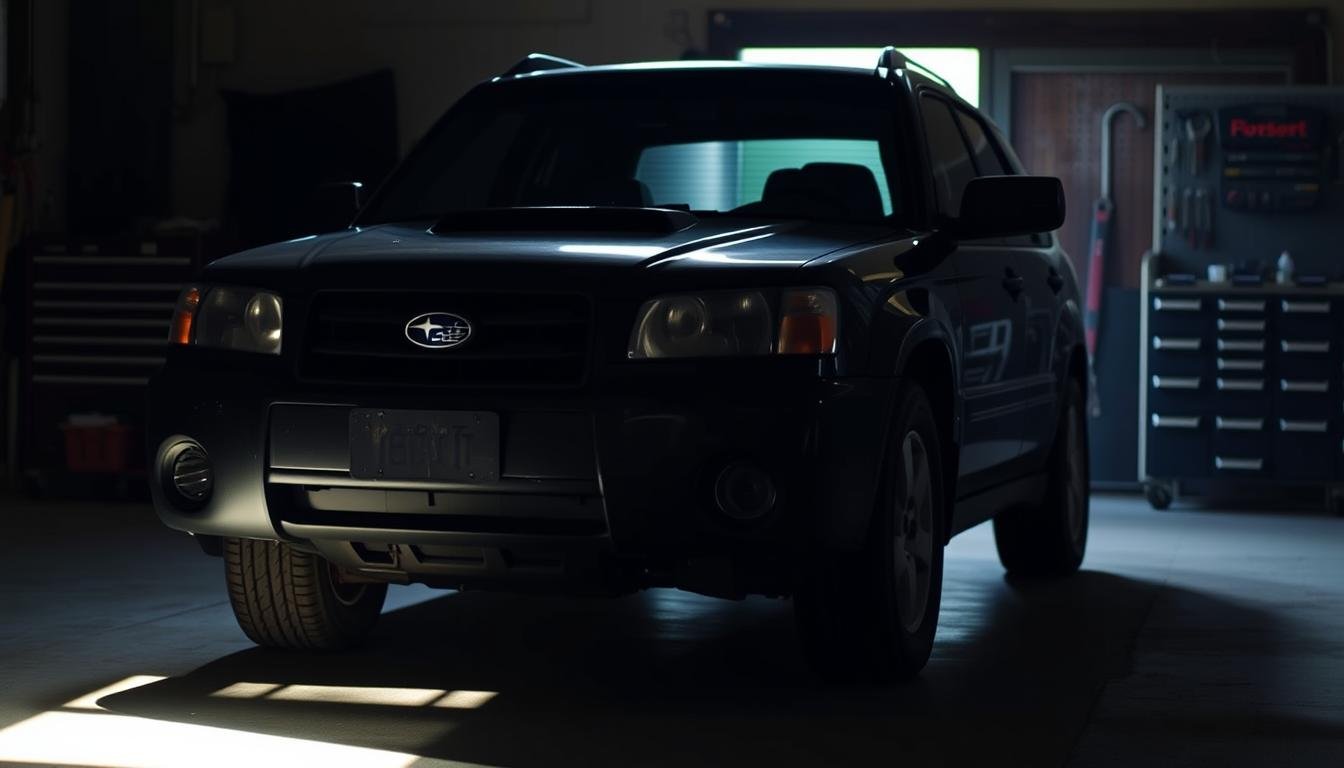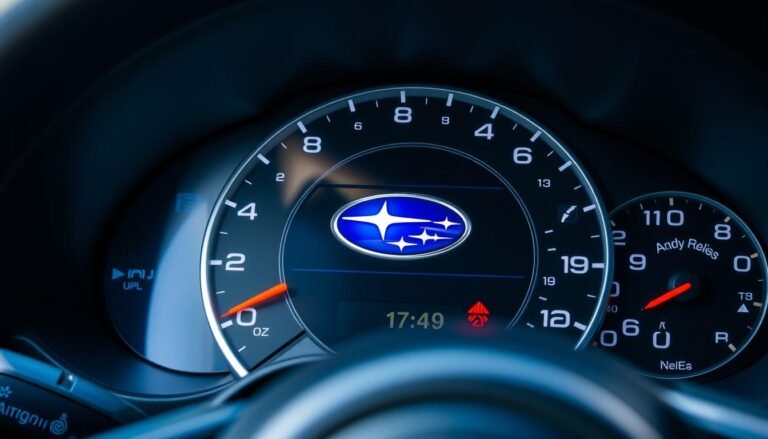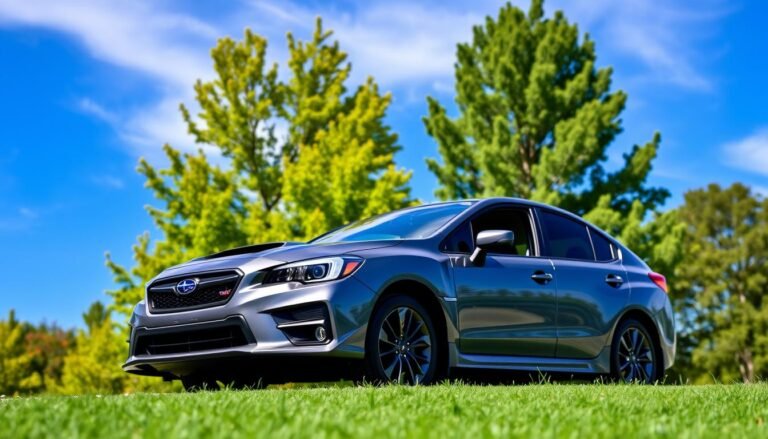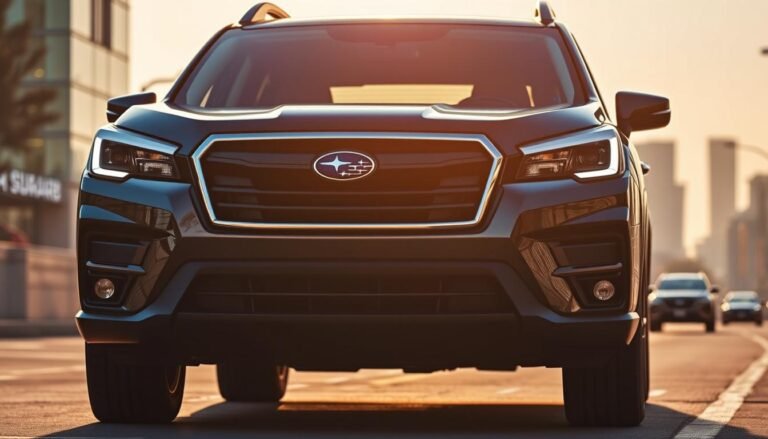Subaru Forester Years To Avoid – Buyer’s Guide
If you’re looking into the subaru forester years to avoid, it’s important to know the years to steer clear of.
You should avoid the 1998, 1999, 2000, 2001, 2003, 2010, 2011, and 2014 models mainly because of reliability issues.
Although the Forester is known for its all-wheel drive and roomy interior, some years have problems that could affect how you enjoy your car.
This guide gives key insights into the least reliable Subaru Forester models, touching on their issues.
The first generation often had head gasket troubles, and later models faced excessive oil use.
It helps you spot these problems, grasp issues with Subaru Forester’s reliability, and navigate the used car market to find one that suits you.
Knowing which years to avoid and the cost of common repairs can guide your purchase. For example, fixing a blown head gasket in a 2010 model can cost about $2,380.
Keep reading for a breakdown of the models, specific problems, and buying tips to ensure your Subaru Forester is a good buy.
Introduction To The Subaru Forester
The Subaru Forester has been around since 1997. Over the years, it has grown in popularity as a crossover SUV. It’s a mix of an SUV’s utility and a car’s easy handling.
It brings comfort, flexibility, and top-notch all-wheel drive. The standard all-wheel drive system boosts grip and steadiness. So, it does well in different driving conditions.
Let’s dive into some details about the Subaru Forester. It has evolved across six generations, each bringing new tech and safety features.
Fuel efficiency has also improved over time, as seen in the following:
| Generation | Years | Fuel Efficiency (mpg) |
|---|---|---|
| First Generation | 1997-2001 | 20-24 |
| Second Generation | 2002-2008 | 21-26 |
| Third Generation | 2009-2013 | 20-28 |
| Fourth Generation | 2014-2018 | 24-31 |
| Fifth Generation | 2019-2023 | 26-33 |
The Subaru Forester’s development shows Subaru’s focus on innovation. With each generation, you get better safety and fuel efficiency. This info helps when choosing a model.
What is The Generations of The Subaru Forester?
Since its launch in 1997, the Subaru Forester has evolved across six unique generations. Each step forward brought changes that mirrored what car shoppers wanted and needed.
Starting as a compact SUV, the Forester grew in design, tech, and how it drives to keep up with a growing market.
The story of the Subaru Forester began from 1998 to 2002 with its first version. It set the stage for future updates, focusing on being safe, reliable, and easy to use.
These traits made it popular among city drivers and those who love the outdoors.
Digging into the Subaru Forester’s history, clear patterns emerge that can help you choose wisely. Every new generation improved, meeting higher standards each time.
For instance, the Foresters made between 2011 and 2013 stood out for being dependable and gas-efficient.
This was a big improvement over the models from 2006-2010, which had more issues. In short, the Subaru Forester’s evolution from a simple SUV to a leader in its class shows how the brand listens and adapts.
Knowing the history of the Forester can help you make a smart choice when looking at used cars.
Subaru Forester Years To Avoid
When looking at a used Subaru Forester, knowing which years to avoid is key. Some years are known for problems, making them a bad choice for buyers.
By knowing these years, you can make a smarter choice and avoid repair and maintenance troubles.
Most Problematic Model Years
- 1998-1999: Notorious for head gasket failures and excessive oil consumption.
- 2003: Shares persistent head gasket issues typical of earlier models.
- 2010-2011: Reported engine failures and high repair costs.
- 2014: Frequently associated with severe oil consumption and mechanical failures.
Overview of Major Issues
Some Subaru Forester years have issues that span many models. Early models, like those from 1998 and 1999, had head gasket problems leading to big engine issues.
The 2014 model is also criticized for using too much oil, having transmission problems, and electrical glitches. These problems hurt the car’s reliability.
Since 2010, owners have faced issues with engines and transmissions. These problems make people wary of certain Subaru Foresters.
First Generation (1998-2002) Overview
The Subaru Forester’s first version, made from 1998 to 2002, had a unique boxy look and great performance. People liked its all-wheel drive and how affordable it was.
But, this generation faced some issues, especially with the 2.5-liter engine. The problem was with the head gaskets—they could start leaking early on.
Knowing these details helps buyers make informed decisions about these early Subaru Foresters.
Key Features and Limitations
This Forester generation was built strong, ready for all kinds of driving. Some key features are:
- All-wheel drive system for better grip on the road
- 2.5-liter engine that’s good on power and gas
- Lots of room for stuff with a big interior
- Safety features that met the standards of the early 2000s
Yet, these models had some downsides. Main issues include:
- Head gasket problems that could cause coolant leaks
- Transmission troubles that might slow acceleration
- Some cars weren’t as reliable over time
Common Problems in Early Years
The first Foresters generally had fewer complaints than later ones. Still, some issues came up more often. These include:
- Head gasket failures that might overheat the engine
- Transmission problems that could affect how the car drives
- Other maintenance issues that could impact the car over many years
The models from 2000 and 2002 are considered more reliable. Looking closely at the older models helps in understanding what to expect and how to deal with common issues.
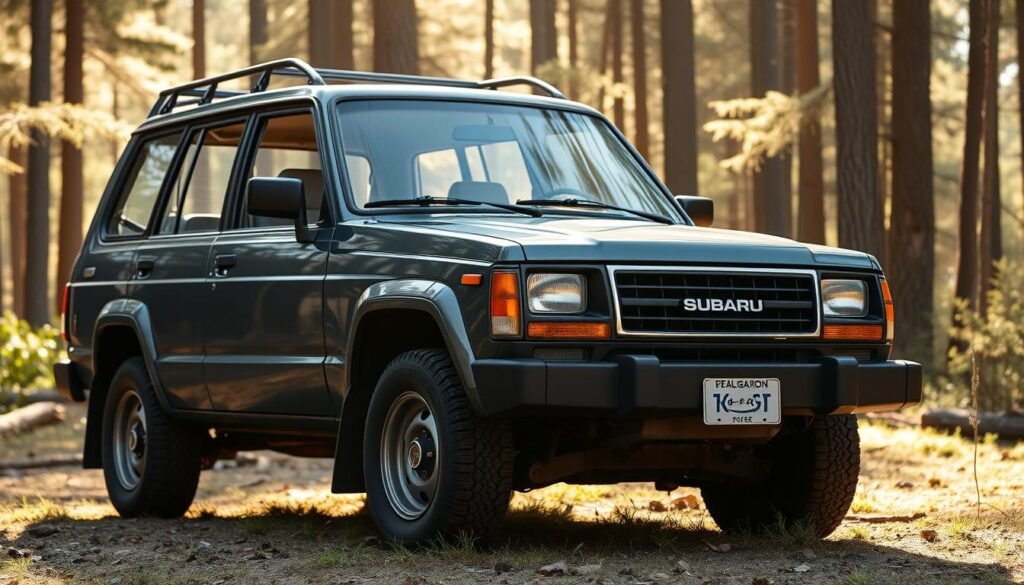
Second Generation (2003-2008) Common Issues
The Subaru Forester’s second generation was made from 2003 to 2008. It got better safety, comfort, and performance.
This time, it had more room inside and better tech. But, the 2003 model had some big problems that buyers need to know about.
Notable Changes and Improvements
In this period, the Forester got top safety scores, especially from 2003 to 2008. The 2004 and 2005 versions offered a great All-Wheel Drive system for tough driving.
And, the cargo space grew to 64.5 cubic feet, making it great for families or trips. The turbocharged engine also made these cars fun to drive.
Recurring Problems in The 2003 Model
The 2003 Forester had some issues. It often had problems with spark plugs and ignition coils. Also, the check engine light could turn on because of the catalytic converter.
And, oil leaks were common. So, the 2003 model is less reliable than the newer ones, which is something to think about before buying.
| Model Year | Reliability Rating (out of 5) | Customer Satisfaction Score (out of 5) |
|---|---|---|
| 2003 | 2.0 | 2.5 |
| 2004 | 3.0 | 3.0 |
| 2005 | 3.0 | 3.0 |
| 2006 | 1.0 | N/A |
| 2007 | 2.0 | N/A |
| 2008 | 3.5 | N/A |
Third Generation (2009-2013) Reliability Concerns
The third generation Subaru Forester was made from 2009 to 2013. It was praised for its safety, getting high marks from a lot of groups.
But, these models had big issues that caused a lot of recalls. They include problems with airbags not opening and brakes not working well.
Safety Ratings vs. Recalls
Consumer Reports said the engine reliability was below average. The 2009 model got a reliability score of 2.0 out of 5.0. The 2010’s rating dropped to 1.0 out of 5.0.
Even with some improvements, the 2011-2013 models scored just 3.0 out of 5.0. Over ten major safety parts were recalled during these years.
This shows a big gap between safety scores and real-world reliability.
Common Issues Reported by Owners
Owners have shared some common problems with this Forester generation. Fixing the engine, especially for leaking head gaskets, can cost more than $2,000.
The original catalytic converter replacement might be over $1,000. The FB25 engine, seen in models from 2011, uses oil fast and needs regular checks.
For upkeep, change the timing belt at 105,000 miles on 2009 to 2010 non-turbo models. Non-turbo models need new spark plugs at 30,000 miles and turbos at 60,000 miles for best work.
Change the oil every 7,500 miles in non-turbo and every 3,750 miles in turbo models. The 2013 non-turbo automatic Forester has okay gas mileage, with 21/26 mpg.
This means it can go about 422 miles per tank on the highway. Even though it can tow 2,400 lbs, owner reports mention several problems. These issues can affect how the car drives.
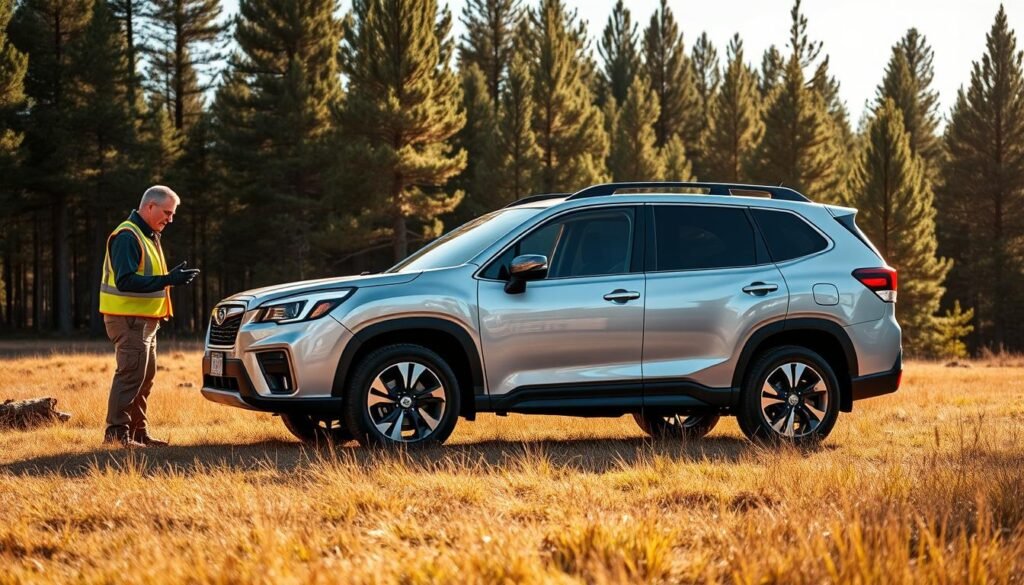
Fourth Generation (2014-2018) Roadblocks
The fourth generation Subaru Forester, covering model years from 2014 to 2018, had its struggles. The 2014 model especially faced criticism.
Owners mentioned issues like too much oil use, AC troubles, and worries about the suspension and transmission. These problems made potential buyers wary.
Overview of The 2014 Model’s Problems
The 2014 Forester aimed to shine in the compact SUV market but ended up facing mechanical issues.
AC system failures were common, particularly with the compressor and condenser. Subaru of America stepped in, often paying for repairs.
This shows just how widespread these problems were. Early days with the car included frequent repairs, straining the bond between owners and their Forester.
2015-2018 Model Comparisons
Looking at models from 2015 to 2018, there was a noticeable shift in reliability. The 2018 model had fewer complaints, especially about the AC, showing a slight improvement.
Fuel efficiency remained similar across these years. This indicates that the issues weren’t due to changes in the fuel system.
In terms of AC performance, older cars with R12 refrigerant worked better than newer ones with R134a. This changed refrigerant could be why many were unhappy with their Subaru’s AC.
Differences in AC component providers during production might explain the failures seen in these Foresters.
Worst Subaru Forester Models
Some Subaru Forester years are known as the worst Subaru Forester models. They have lots of user complaints and reliability issues.
Knowing which models to avoid can help you save time, money, and avoid a lot of trouble. These models are the ones you might want to think twice about.
Highlights of Models To Avoid
- 1998 and 1999: Both years had a lot of reliability complaints, so they’re not good choices.
- 2001: This year, be ready for big repair bills because of major head gasket problems. Repairs can cost over $1,500.
- 2003: Owners had issues with the transmission and drivetrain. They also found rust on the rear subframe too early.
- 2010 and 2011: These years come with different complaints, including problems with oil consumption.
- 2014: Known for using too much oil and having a faulty CVT. Repairs could go beyond $3,000.
Collective Buyer Experiences
Buyer’s feedback shows they’re unhappy with these worst Subaru Forester models. For instance, the 2009 model had 18 recalls, mostly for airbag problems, which is alarming.
The 2014 model also got a lot of complaints about using up oil quickly. Such stories underline why it’s crucial to research well on models to avoid when looking for a used Subaru Forester.
Common Problems Subaru Forester Owners Face
Subaru Forester owners often face issues with their engines and transmissions. Solving these problems early can save time and make the car safer and last longer.
We will explore the common engine and transmission problems and how to fix them.
Frequent Engine Issues and Solutions
Subaru engines are known for issues like oil consumption and gasket leaks. Regular maintenance is key to finding and fixing problems early.
You can avoid big engine troubles by doing a few things:
- Regularly checking and changing oil and filters.
- Monitoring coolant levels to prevent overheating.
- Inspecting for oil leaks and addressing them promptly.
- Ensuring proper maintenance of fuel and propulsion systems.
By keeping up with these maintenance tasks, owners have found they can fix significant engine problems. This can also cut repair costs and make the car run better.
Transmission Problems Across Generations
Transmission issues are also a big problem for Subaru models. Older models, especially from before 2010, often have problems like slipping and overheating.
These issues can really impact how the car drives. To keep transmission problems at bay, you should:
- Perform routine transmission fluid checks and changes.
- Act quickly on any warning lights or unusual sounds while driving.
- Get regular inspections on the clutch and related components.
Below is a table showing common transmission issues in Subaru Foresters:
| Model Year | Reported Transmission Issues | Complaints Count |
|---|---|---|
| 2003 | Slipping and braking issues | 178 |
| 2004 | Leaking brake lines | 207 |
| 2010 | Transmission failure | 228 |
| 2014 | Transmission fluid noise | 227 |
| 2015 | Drivetrain vibration | 297 |
Subaru Forester Model Years Reliability Ratings
Subaru Forester’s reliability ratings change a lot depending on the year. Models from 2010, 2011, and 2014 often have low scores.
This is due to issues like engine troubles and problems with accessories. The 2010 model is known for using too much oil and needing expensive repairs.
It may even have head gasket failures at around 50,000 miles. The 2011 model also uses too much oil, costing about $1,640 on average to fix.
These years with problems are very different from the 2008 model. The 2008 Subaru Forester had fewer issues and only one recall, making it more reliable.
Some years of the Subaru Forester are more likely to have big problems. The 2014 model is especially worrying because of engine and suspension failures.
Fixing suspension problems can cost about $1,200. This shows why it’s important to carefully check the reliability of different model years.
| Model Year | Common Issues | Average Repair Cost |
|---|---|---|
| 1998 | Significant head gasket problems | Varies |
| 2010 | Excessive oil consumption | $2,380 |
| 2011 | Excessive oil consumption | $1,640 |
| 2014 | Engine failure, suspension issues | $1,200 |
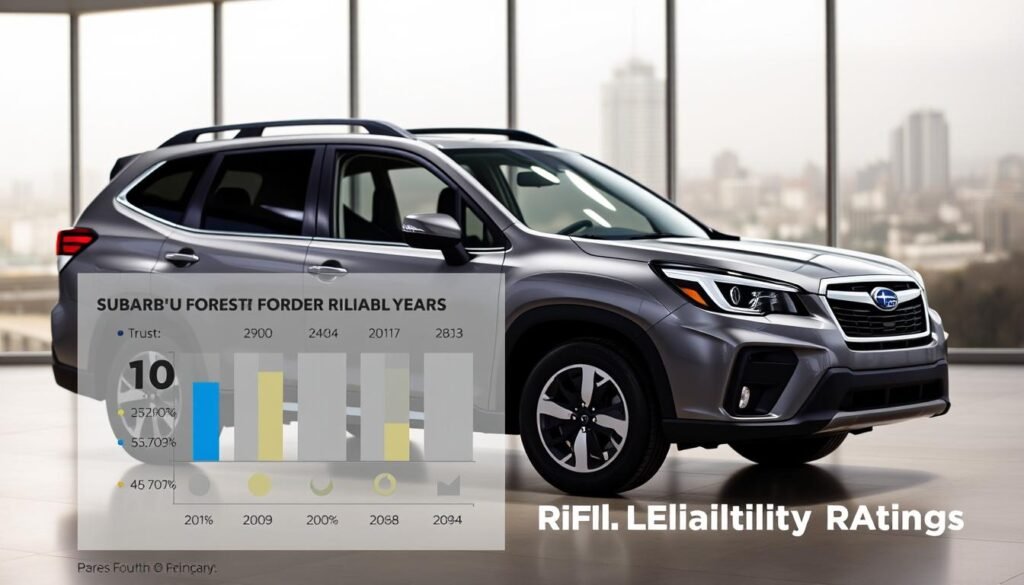
Subaru Forester Year Breakdown: Best and Worst
Models from 2000 to 2002 and 2004 to 2008 are seen as the most reliable Subaru Foresters. They have fewer problems and perform well consistently, according to owners.
On the other hand, the 2010, 2011, and 2014 models often face a lot of issues, making them the least reliable.
This breakdown shows each model year’s strengths and weaknesses. For example, some years had issues with the suspension and steering.
There were also problems with the climate systems, like broken AC compressors and leaks. Worst years had many complaints about in-car electronics and exhaust systems.
Problems included leaks and faulty catalytic converters. Also, there were issues with brakes and electrical accessories failing.
The following table summarizes the best and worst Subaru Forester years based on reliability ratings, reported issues, and overall performance:
| Model Year | Reliability Rating | Common Issues |
|---|---|---|
| 2000 | 4/5 | Head gasket failures, transmission slips |
| 2001 | 4.5/5 | Minimal issues reported |
| 2002 | 4.5/5 | Few common problems noted |
| 2004 | 4/5 | Standard wear and tear issues |
| 2010 | 2.5/5 | Engine stalling, airbag issues |
| 2011 | 2/5 | CVT issues, persistent engine stalling |
| 2014 | 2.5/5 | Electrical system glitches, steering defects |
Knowing about these Forester years helps you make a good choice when buying a Subaru Forester.
This information on the best and worst years can guide you in selecting the right vehicle.
Best Model Years For Purchase
The years 2019, 2020, and 2021 are the top choices when buying a Subaru Forester. Known for their cutting-edge tech, top safety features, and high reliability, these models are a great pick.
They offer a smooth ride and cost less to maintain than older versions. Each year has its own strengths:
- 2019 Subaru Forester: This model is praised for its family-friendly design and lots of room for cargo. It provides a comfortable drive and has strong safety scores.
- 2020 Subaru Forester: Known for saving on gas and having extra help for the driver, it’s perfect for everyday use or trips.
- 2021 Subaru Forester: Stays reliable with new tech and is known for lasting a long time.
These models score over 4.0 out of 5.0 for reliability on car review sites. They stand out as solid choices for buying new or used.
By choosing one of these Subaru Foresters, you’ll save on repairs and enjoy a dependable car.
| Model Year | Average Asking Price | Reliability Rating | Noteworthy Features |
|---|---|---|---|
| 2019 | $28,000 | 4.0/5.0 | Advanced safety technology, spacious interior |
| 2020 | $28,837 | 4.1/5.0 | Impressive fuel economy, modern features |
| 2021 | $29,000 | 4.2/5.0 | Enhanced technology, high safety ratings |
Choosing from these superb years means enjoying your car and trusting its performance. Each model showcases Subaru’s focus on innovation and steady reliability.
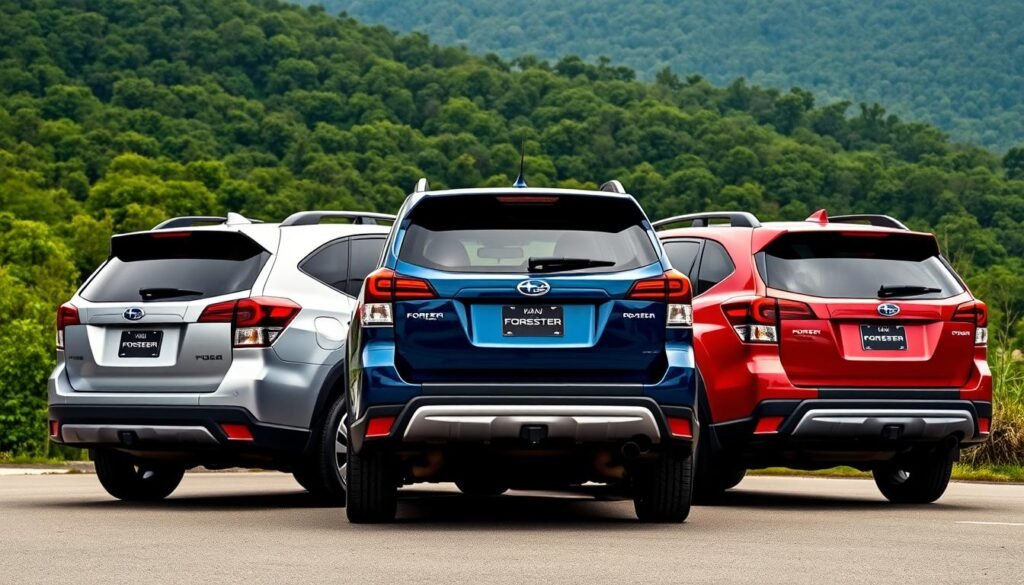
Conclusion
When choosing a Subaru Forester, it’s essential to know each model’s pros and cons. This guide highlights which models to skip and which ones are reliable.
That way, you cut down the chances of making a bad investment. The 2016 and 2020 models stand out for being reliable and fuel-efficient, making shopping easier for you.
Think carefully about what you need from a Subaru Forester. Although older models might seem attractive, they can have downsides.
These include problems with performance and high maintenance costs. If you choose models from the best years, like 2021 or 2018, you’ll likely face fewer issues.
This helps you make the most of this capable crossover SUV. Finally, the Forester is known for being durable and flexible.
Choosing a model from a year known for reliability will enhance your experience. As you decide on your purchase, pay close attention to the car’s specific features and condition.
This ensures your Subaru Forester will be a valuable companion for a long time.
FAQs
What are the Subaru Forester years to avoid?
Stay away from Subaru Forester models from 1998, 1999, 2000, 2001, 2003, 2010, 2011, and 2014. They have major engine problems, use too much oil, and have electrical issues.
What are the most common problems with the Subaru Forester?
Subaru Forester owners often report engine problems like oil gasket leaks, too much oil use, and transmission issues, especially in some years.
Which Subaru Forester model years have the best reliability ratings?
The most reliable Forester years range from 2000 to 2002 and 2004 to 2008. The years to avoid due to poor reliability are 2010, 2011, and 2014.
How do the reliability concerns vary across different Subaru Forester generations?
Reliability worries change with each Forester generation. Older models have head gasket troubles. The 2014 models often use too much oil and have transmission issues.
What should I look for when purchasing a used Subaru Forester?
Check the model year when buying a used Subaru Forester. Look for any recalls or major repairs done. Also, consider the model’s reliability ratings.
Are there specific features that make certain Subaru Forester models better?
Yes, newer models (2019 onwards) are better thanks to advanced safety tech, nicer interiors, and improved engine performance. These features enhance their reliability and driving experience.
What were the significant changes in the second generation of Subaru Forester?
The second generation (2003-2008) improved safety, handling, and interior space. However, it also dealt with recall issues involving airbags and brakes.

